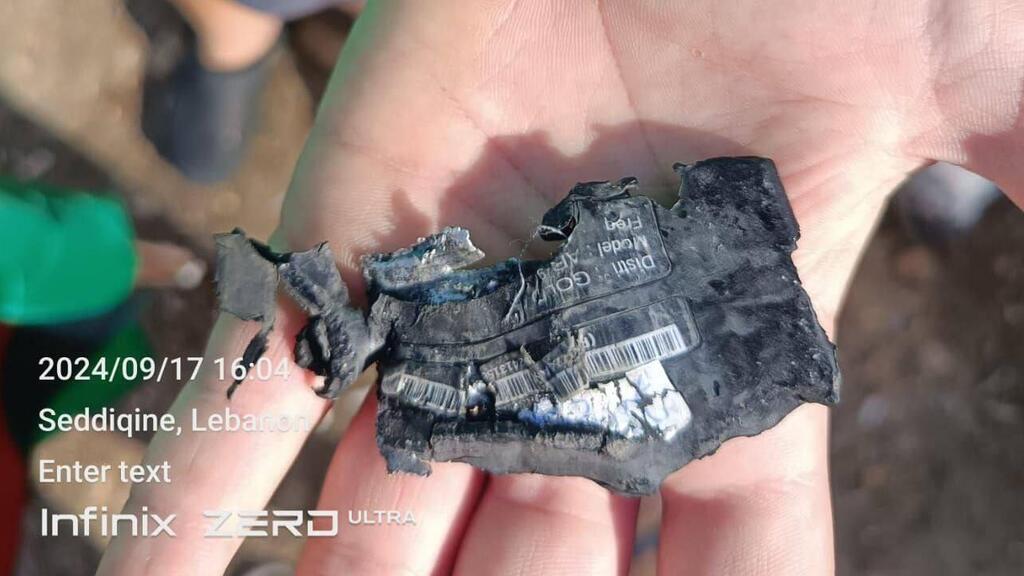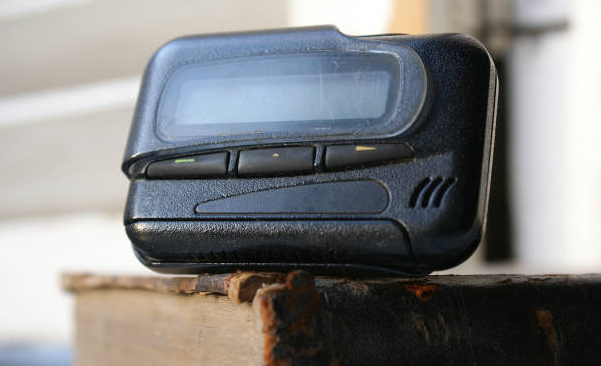Getting your Trinity Audio player ready...
The Washington Post published a report Sunday overnight providing more details into the pager attack in Lebanon against Hezbollah which is attributed to Israel. “Also invisible was Mossad’s remote access to the devices. An electronic signal from the intelligence service could trigger the explosion of thousands of the devices at once,” the report read.
The new details of the operation attributed to the Mossad were gathered from interviews conducted by the outlet with Israeli, American and Arab security officials, politicians and diplomats briefed on the events and official Lebanese sources and individuals close to Hezbollah.
According to one source, Hezbollah’s terrorists needed to press two buttons simultaneously to read the encrypted message. "In practice," the source noted, "this meant using both hands." He added that in the explosion triggered by reading the message, the pager holders would almost certainly "wound both their hands," and thus "would be incapable to fight."
The sources described a years-long plan conceived at Mossad headquarters in Tel Aviv, ultimately involving a team of agents and operational partners from various countries, many of whom were unaware of the larger mission.
According to the outlet, the operation sparked a debate between Israel's security officials. A political source summarized the anxiety over the operation with a sarcastic remark during a meeting with Mossad officials: "We cannot make a strategic decision such as an escalation in Lebanon while counting on a toy," referring to the pagers.
Reportedly, Israeli decision-makers weren’t aware of the plan until September 12, five days before it was carried out. Prime Minister Benjamin Netanyahu then convened a meeting with intelligence officials, who revealed the preparations.
Other attendees were concerned about approving the Mossad’s plan, fearing it could lead to full-scale war. Some noted that "there were some risks," but intelligence officers warned that Hezbollah, in light of the rising tensions, might take additional precautions and discover the explosives. The Mossad saw the chance to carry out “something more intense,” according to The Washington Post.
The devices were designed by the Mossad and assembled in Israel. The Israeli agency had worked to infiltrate Hezbollah using electronic surveillance and human informants for years, the Washington Post reported.
Over time, Hezbollah leaders became concerned about their vulnerability to Israeli surveillance and cyberattacks, fearing even ordinary phones could be used for eavesdropping and monitoring under Israeli control.
As a result, the idea emerged in Israel to create a type of communication device that would serve as a "Trojan horse," a political source told the outlet. Hezbollah sought a cyberattack-resistant electronic network, and the Mossad devised two plans that would lead the terror organization to acquire communication devices that seemed perfect for the job — equipment designed by the intelligence agency and assembled in Israel.
As part of the operation’s first phase, the booby-trapped communication devices began arriving in Lebanon via the Mossad nearly a decade ago, in 2015. These portable two-way radios contained relatively large battery packs, hidden explosives and a transmission system that gave Israel full access to Hezbollah's communications.
Sources interviewed by the newspaper said Israel was content with eavesdropping on Hezbollah for nine years, while maintaining the ability to turn the radios into bombs in a future crisis. But then a new opportunity arose with a new product: a small pager equipped with powerful explosives.
Coordinated blasts of Hezbollah communication devices
Since the terror organization’s leaders were cautious about the possibility of sabotage in the radios they purchased, the pagers couldn't be manufactured in Israel, the U.S., or any of Jerusalem's allies.
In 2023, Hezbollah began receiving offers to purchase large quantities of communication devices from Gold Apollo, a Taiwanese company known for its trademark and global product line which had no ties to Israeli or Jewish interests. According to the sources, the Taiwanese company was unaware of the plan.
The offer came through a sales representative with ties to Gold Apollo, who was trusted by Hezbollah. This sales representative, whose identity and country of origin officials refused to disclose, was a former sales representative for the Taiwanese company in the Middle East.
She later started her own company and received a license to sell pagers under the Apollo brand. At some point in 2023, she offered Hezbollah a deal on one of her company’s products, the reliable AR-924 device.
“She was the one in touch with Hezbollah, and explained to them why the bigger pager with the larger battery was better than the original model,” an Israeli official briefed on the operation's details told the outlet. According to him, one of the key selling points of the AR-924 was that it was “possible to charge with a cable. And the batteries were longer lasting.”
Get the Ynetnews app on your smartphone:










